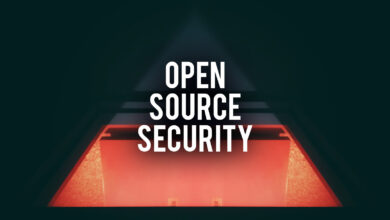Google’s Cross Cloud Network Advantages

The recent Google Cloud Next conference, held in the last week of August 2023, showcased numerous launches and announcements from the global cloud giant.
A pivotal area of discussion was artificial intelligence (AI), highlighted by the rollout of the end-to-end GenAI Marketing Solution, among other innovations. Another focal point was multi-cloud connectivity, with the announcement of a new solution designed to simplify connectivity and security across heterogeneous IT environments. This solution, named the Cross-Cloud Network, aims to address the persistent challenges encountered by multi-cloud adopters.
The State of Multi-Cloud Adoption in 2023
According to a study commissioned by Oracle, multi-cloud technology has firmly established its place within enterprise technology. Notably, Oracle is among the cloud vendors supported by the new Google Cross Cloud Network solution. The survey indicates that 98% of businesses utilize or plan to work with at least two cloud infrastructure vendors, while 31% are already using four or more.
40% of IT departments plan to implement multi-cloud strategies to mitigate risks across their entire IT environment, and 38% intend to use them for expansion into new regions or to facilitate multinational service delivery.
However, another study, which also reveals high multi-cloud adoption rates, indicates that 9 out of 10 organizations utilizing multi-cloud architectures report encountering difficulties. The lack of standardization and compatibility in application deployment tools poses a significant challenge, as does optimizing the efficacy of distributed programs operating in various settings. Ensuring uniformly enforced security policies across diverse environments also presents a hurdle.
What is the Google Cross Cloud Network Solution and How Does it Work?
Cross-Cloud Network is a global cloud networking infrastructure built upon Google’s internal backbone, providing efficient any-to-any connectivity, an enhanced app experience, and machine learning (ML)-powered protection for all users and workloads, regardless of their location.
The solution operates by consolidating security and abstracting cloud-based workloads. It is designed to be a flexible and customizable networking platform that facilitates connections between multiple clouds and on-premises locations, utilizing the following key components:
- Cloud NGFW: Google’s scalable, cloud-first firewall solution. It protects your applications with zero-trust safety measures, empowered by machine learning. A Palo Alto Networks-powered intrusion detection and prevention system provides integrated protection against spyware, malware, and command-and-control attacks.
- Cross-Cloud Interconnect: Announced by Google in May, this is a high-performing, fully encrypted network connection. Upon purchasing Cross Cloud Interconnect, Google establishes an exclusive physical link between its network and another cloud service provider’s network.
- The Google Cloud infrastructure: Google Cloud provides a global, SLA-backed, encrypted backbone with substantial global reach. It has more than 187 points of presence (PoPs) in over 200 countries and territories. Utilizing service-centric, any-to-any connectivity based on Google’s core global network, accelerates application deployment and functionality.
What You Can Do with the Google Cross Cloud Network
This new multi-cloud enabler from Google potentially paves the way to the following four elements:
- Drive Consistent Front-End User Experiences: If you’re using apps across multiple clouds and on-premises, Cross-Cloud Network, through its global front-end services, enhances the application user experience. It provides health monitoring tools to ensure your apps are receiving data and being administered from the optimal location.
- Strengthen Security for Data in Motion Between Clouds: Google Cloud optimizes your connection with other clouds through an encrypted, high-speed private connection. By deploying the Cloud NGFW (Next-Generation Firewall) in Google Cloud, on-premises, or with other clouds, you can achieve comprehensive multi-cloud networking that is both secure and efficient.
- Create More Sustainable Hybrid Work Environments: Employees are a significant vector for security breaches. As more workers adopt hybrid work models, the risk increases. You can connect to popular Security Service Edge (SSE) operators through the Google Cross Cloud Network’s open and interconnected partner ecosystem. SSE stacks include cloud access security brokers (CASB), data loss prevention (DLP), and other authentication services to safeguard employee interactions over public networks like the Internet.
- Assist in Content Delivery: The solution incorporates several features to support enterprise content delivery. Using Google’s global edge network, Cloud CDN optimizes web-based apps. Media CDN leverages YouTube’s architecture to deliver video streams (VOD and live) and large file downloads, focusing on faster, reliable distribution. Additionally, you can extract materials from any HTTP-capable resource and even assets beyond Google Cloud, like storage spaces in other clouds.
Multi-cloud Gains with Google Cross Cloud Network
The solution offers crucial benefits such as:
- Cloud-to-Cloud App Interconnectivity: It provides a secure, high-bandwidth, managed service that connects Google Cloud to Amazon Web Services (AWS), Azure, Alibaba, and Oracle Cloud.
- Simpler Security Configuration: By default, network firewall rules are global and apply to all locations. However, you can establish organizational, folder, and project-level standards with tiered frameworks.
- Support for Virtual Private Clouds (VPCs): The solution establishes an encrypted, private link between your VPCs and Google, other entities, or your own systems, eliminating the need to set up either a web gateway or a VPC peer link.
- Improved User Experiences: It facilitates extensible load balancing in Google Cloud for HTTP and HTTPS traffic, as well as for TCP/SSL/UDP. You can gather load balancer analytics to understand app and system efficiency.
- Protection for Application Programming Interfaces (APIs): The solution also includes Web App and API Protection (WAAP) for multi-cloud applications that rely on API connections. This is supported by Google security services like Cloud Armor, reCAPTCHA Enterprise, and Apigee.
In addition to the core Cross Cloud Network and its three components, Google is introducing several other capabilities that could make multi-cloud management easier and more value-adding for enterprise IT teams.
Cross Cloud Network supports Google’s Network Connectivity Center, which orchestrates network connectivity across various resources. To this service, Google has added VPC spokes, a feature that enables customers to expand their virtual private connectivity. Furthermore, a feature named Private Service Connect provides access to managed service networking without exiting the Google Cloud network. It supports over 20 distinct Google and partner-managed products and services, such as Databricks, JFrog, and MongoDB.
Cross Cloud Network Use Case: Walmart Reduces App Latency
Walmart, one of the earliest adopters of Google’s Cross Cloud Network, was spotlighted at Google Cloud Next 2023. Gerald Bothello, Senior Director of Software Engineering for Cloud at Walmart, conducted a session. During his interview with Google’s Vice President and General Manager of Cloud Networking, Bothello revealed that Walmart utilizes three cloud service providers across several regions.
Walmart’s multi-cloud infrastructure aims to enable its internal users to establish operations in the most optimal locations for minimizing application latency. The company intended to transfer duties directly from a public cloud provider to Google. Cross-Cloud Network enabled Walmart to reduce latency and also ensured 99.99% availability.
Notably, Cross-Cloud Network will ensure a 35% reduction in network latency and a 40% decrease in the total cost of ownership, compared to the figures achieved when connecting applications without first routing traffic through Google’s network, according to the company’s announcement at the conference.
Beyond merely improved cross-cloud connectivity, Bothello stated that Walmart plans to utilize the Google Cross Cloud Network for data storage and artificial intelligence (AI) workloads.
Key Takeaways for IT Decision Makers
As multi-cloud adoption proliferates globally, seamless and secure interconnectivity becomes crucial. Google’s Cross Cloud Network provides high-performance, low-latency connections to enhance app efficiency across clouds and supports cloud-native security. Users can manage security policies directly in Google Cloud Platform or through their preferred third-party tools. Organizations can expand with greater confidence and security, thanks to load balancing, multi-regional reliability, and resiliency.
While the solution is currently compatible with only four major cloud vendors, Google Cross Cloud Network represents a step in the right direction: towards ubiquitous cloud interoperability, which is one of the most frequently believed multi-cloud myths today.
In Summary
The Google Cross Cloud Network emerges as a pivotal solution in the realm of multi-cloud adoption, addressing key challenges related to connectivity, security, and application performance across diverse IT environments. For IT decision-makers and enterprises navigating the multi-cloud landscape, this solution offers enhanced user experiences, robust security, and streamlined connectivity, potentially simplifying the complexity inherent in managing multi-cloud architectures.
With use cases like Walmart illustrating tangible benefits, such as reduced latency and cost savings, and with additional capabilities continually rolling out, Google’s Cross-Cloud Network is poised to be a significant player in advancing multi-cloud strategies for enterprises globally.



